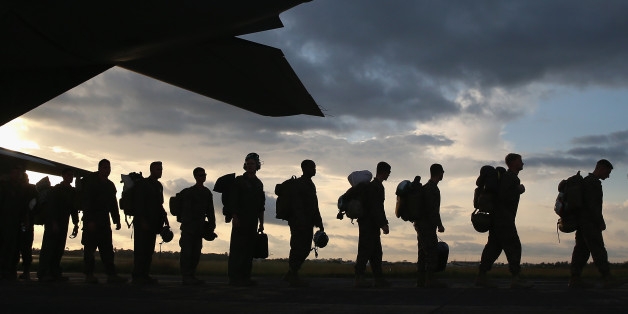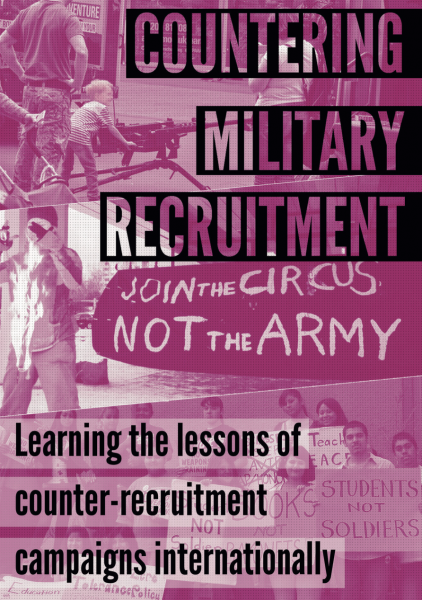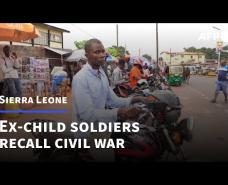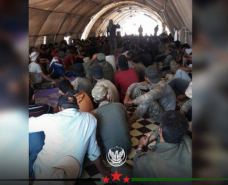Poverty, Militarism and the Public Schools

By Robert Koehler What’s the difference between education and obedience? If you see very little, you probably have no problem with the militarization of the American school system — or rather, the militarization of the impoverished schools . . . the ones that can’t afford new textbooks or functional plumbing, much less art supplies or band equipment.
The Pentagon has been eyeing these schools — broken and gang-ridden — for a decade now, and seeing its future there. It comes in like a cammy-clad Santa, bringing money and discipline. In return it gets young minds to shape, to (I fear) possess: to turn into the next generation of soldiers, available for the coming wars.
The United States no longer has a draft because the nation no longer believes in war, except abstractly, as background noise. But it has an economic draft: It claims recruits largely from the neighborhoods of hopelessness. Joining the U.S. military is the only opportunity to escape poverty available to millions of young Americans. We have no government programs to build the infrastructure of peace and environmental sustainability — we can’t afford that, so it has to happen on its own (or not at all) — but our military marches on, funded at more than half a trillion dollars a year, into ever more pointless wars of aggression.
Glory, glory hallelujah. I’d never been to a Memorial Day parade in my life, but I went to this year’s parade in downtown Chicago because members of the Chicago chapter of Veterans for Peace were going to be there, protesting the militarization of the city’s schools.
I arrived as the parade was still assembling itself along Wacker Drive. What I saw, along with the Humvees and the floats (Gold Star Families of the Fallen, Paralyzed Veterans of America: Making a difference for 70 years) were thousands of young people — mostly kids of color, of course — bedecked in various uniforms, standing in formation as martial music erupted sporadically, driven by the drumbeat of certainty. Some of the boys and girls seemed as young as 10 or 11. One boy walked past me twirling a rifle like it was a baton. Was it real? Was it loaded?
The concept of America is a totally military phenomenon, I thought as I walked along the parade route. This is what holds it together, not culturally, but as a legally organized entity. The flags, the rifles, the Humvees, the names of the dead . . . the uniformed children. For a moment I wondered if I could continue calling myself an American.
Then I met up with the Vets for Peace people at State and Lake — a small group of men and women handing out stickers that read: “No military in Chicago Public Schools. Education, not militarization.”
“The idea is, just by being here, we’re having people stop for a moment and think about the militarization of Chicago schools,” Kevin Merwin told me. “There’s opposition to the wholesale militarization of youth in Chicago. It’s the most militarized school system in the country, if not the world.”
Indeed, according to various sources, there are between 9,000 and 10,000 young people in the Pentagon’s JROTC program, with “military academies” — often in spite of furious community opposition — taking over portions of 45 of the city’s 104 high schools.
“Kids in seventh grade are being rolled up into this Memorial Day parade,” Merwin said. “We’re inculcating kids into the military system at a young age — the kind of thing we criticized the Soviet Union for back in the day. And it’s mostly kids of color.”
Ann Jones, addressing this hypocrisy, pointed out in an excellent essay that Congress actually passed an act in 2008 — the Child Soldiers Prevention Act — that was “designed to protect kids worldwide from being forced to fight the wars of Big Men. From then on, any country that coerced children into becoming soldiers was supposed to lose all U.S. military aid.”
However, not surprisingly, the economic interests of the military-industrial complex eventually gutted the intention of this rare bit of compassionate legislation. Five of the ten countries on the child-solider list, Chad, South Sudan, Yemen, the Democratic Republic of the Congo and Somalia, have been granted “waivers” so they can continue to purchase American weapons.
“Too bad for the young — and the future — of those countries,” Jones wrote. “But look at it this way: Why should Washington help the children of Sudan or Yemen escape war when it spares no expense right here at home to press our own impressionable, idealistic, ambitious American kids into military ‘service’?
“It should be no secret that the United States has the biggest, most efficiently organized, most effective system for recruiting child soldiers in the world.”
Those who want to perpetuate the military mindset — that is to say, the servants of the most powerful economic interests in the country — have to grab the minds of the young, because only in one’s youth does militarism resonate with uncontaminated glory. This is why the Army maintains a gamer website. And it’s why every branch of military service sets up shop in our most desperate schools and parades the Junior ROTC boys and girls before the public on Memorial Day, our national holiday in celebration of arrested development.
Source: http://www.huffingtonpost.com
Countering Military Recruitment

WRI's new booklet, Countering Military Recruitment: Learning the lessons of counter-recruitment campaigns internationally, is out now. The booklet includes examples of campaigning against youth militarisation across different countries with the contribution of grassroot activists.
You can order a paperback version here.








